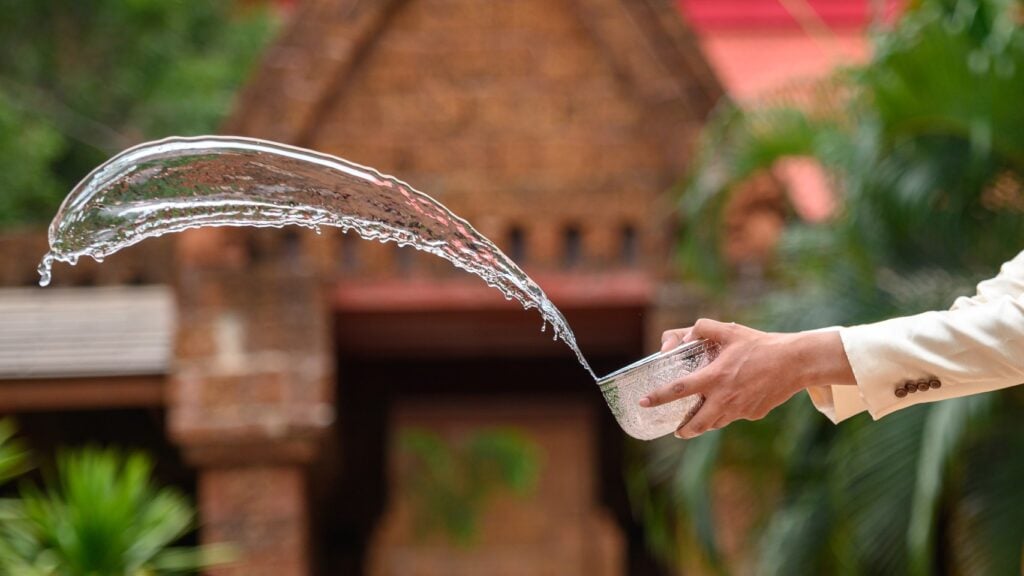
“Water damage claims cost insurers over $13 billion annually in the U.S. alone.” That’s not a typo. Thirteen billion. Every year.
Here’s the kicker: most of those disasters? Completely preventable.
I learned this the hard way.
After coming home to warped floorboards and the faint smell of mildew, I quickly discovered a pipe behind my washing machine had been dripping for who knows how long. No alert. No warning. Just damage. That was when I started researching water leak prevention devices—and what I found could’ve saved me thousands.
So, what exactly are water leak prevention devices?
These are smart systems that detect leaks in real time and either alert you or shut off your water supply automatically. They’re not just fancy tech toys; they’re tools of precision, designed to give you back control over something that often spirals very quickly out of control.
Here’s what I found that actually works—and what I now recommend to anyone with pipes (so, everyone):
Why it matters:
Water damage isn’t just about soggy carpets. It leads to mold, structural decay, and massive renovation bills. Worse, it’s often not immediately visible. That’s why relying on your eyes or monthly water bills isn’t enough.
With today’s connected tech, you don’t have to wait for disaster. Water leak prevention devices give you early detection, instant alerts, and the ability to act before damage starts. That’s proactive protection—not damage control.
In my case? The next drip didn’t become a flood.
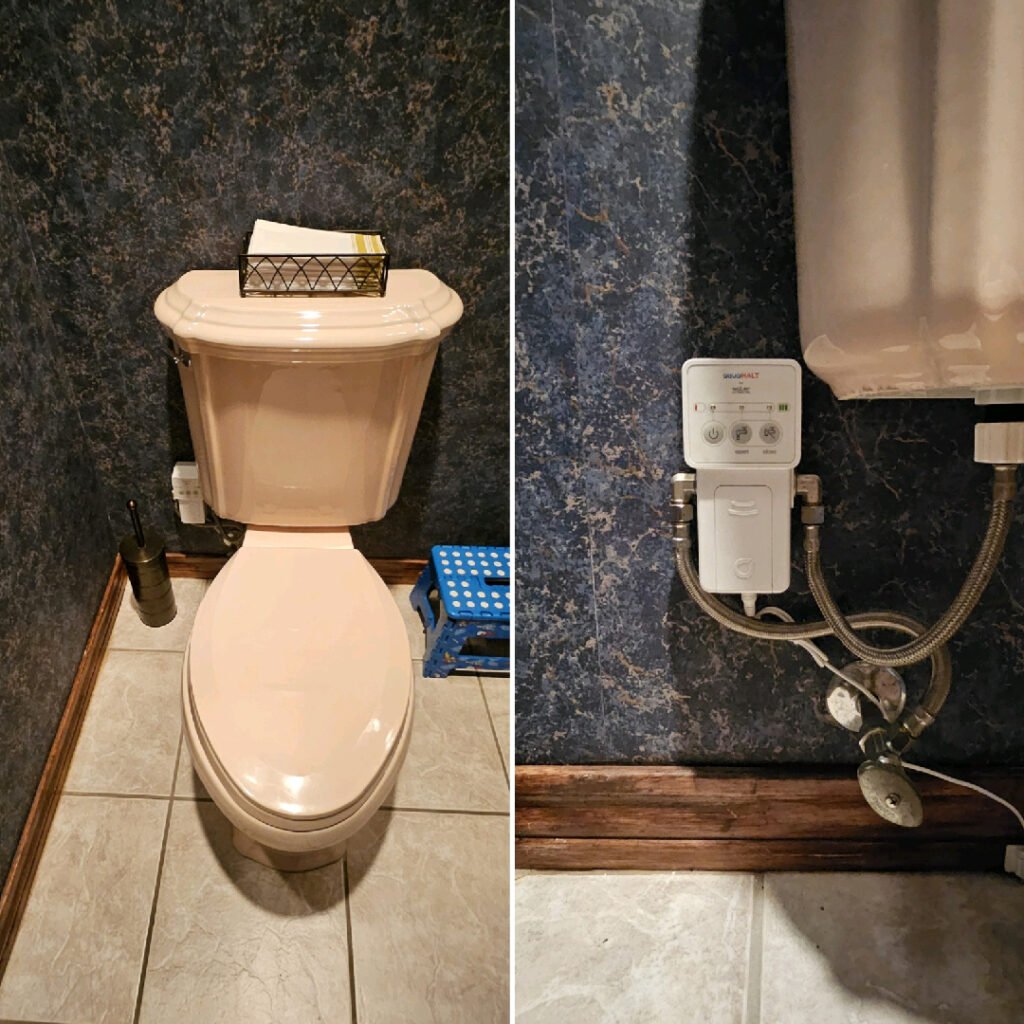
Let’s be honest – home disasters don’t usually knock first. They kick the door down. One minute you’re watching TV, the next your laundry room looks like a kiddie pool.
Water leaks are sneaky like that. They strike when you’re least prepared – on holidays, overnight, or that one weekend you actually decided to relax.
But what if one small, $150 device could stop all of that before it even began?
Meet aquaHALT, the tiny hero by waterAUTOMATION that quietly stands guard while you’re out living your life.
In a world where everything needs charging, updating, and syncing, aquaHALT is refreshingly simple. It doesn’t need Wi-Fi, a smartphone app, or a 43-step setup process.
It runs on two AA batteries – that’s it. Pop them in, place the device where water might cause trouble (under your sink, behind your washing machine, near the water heater), and you’re done.
No monthly subscriptions. No pairing codes. No software updates at 2 a.m. Just old-fashioned reliability in a smart little package.
Sure, “smart home” leak detectors sound cool – until your Wi-Fi goes down, your app glitches, or your phone dies.
aquaHALT doesn’t care about Wi-Fi signals or firmware updates. It’s too busy doing its job:
listening 24/7 for the faintest sign of water where it doesn’t belong.
And when it finds one? It lets you know – immediately. Loudly.
Because the only thing worse than a leak is not knowing you have one.
At first glance, aquaHALT doesn’t look like much – just a compact device powered by two humble batteries. But under the hood, it’s a powerhouse of prevention.
Its high-sensitivity water sensors can detect even small amounts of moisture before they turn into major problems.
That means no more waking up to soggy carpets, dripping ceilings, or that dreaded “splash” sound when you step into the laundry room.
In other words, aquaHALT doesn’t wait for disaster – it prevents it.
One of the biggest myths about water damage is that it only happens in older homes.
Wrong.
Even brand-new builds can have leaks – from shifting foundations, loose fittings, or appliances that weren’t installed perfectly. Water doesn’t discriminate.
So whether your house is 30 days old or 30 years old, a leak detector is a must-have.
Think of aquaHALT as an equal-opportunity protector.
Leaks don’t punch time cards. They don’t take weekends off. That’s why aquaHALT never clocks out.
While you’re asleep, at work, or away for the holidays, it’s still watching, still listening, and still ready to sound the alarm if water shows up where it shouldn’t.
It’s like having a personal security guard for your plumbing system – minus the attitude and the coffee breaks.
Installing aquaHALT takes less time than making a cup of coffee:
That’s it. No wiring. No Bluetooth pairing. No instruction manual thicker than a novel.
Just quiet protection you don’t have to think about until it saves you.
It’s the kind of device you forget exists – until the day it saves you a fortune.
Our homes are getting smarter – but sometimes, simple tech wins the day.
aquaHALT is proof that you don’t need Wi-Fi, cloud syncing, or subscription plans to protect what matters.
Just a small device, a little foresight, and two AA batteries.
Leaks don’t care about your schedule, your new floor, or your peace of mind. But aquaHALT does.
For $150, it gives you round-the-clock protection, zero setup headaches, and the priceless satisfaction of outsmarting water itself.
Because the best home upgrades don’t just make life easier – they make it drier.
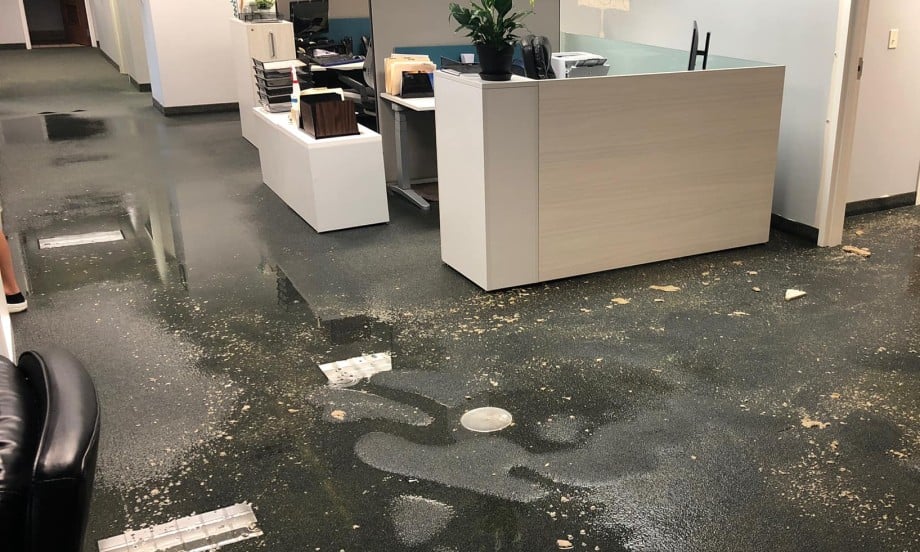
You’re making coffee, half-awake, when you notice that faint drip… drip… drip under the sink. It’s nothing major, you tell yourself – a few drops, maybe a loose pipe. You’ll fix it on the weekend.
Fast-forward two months. The floorboard’s warped, the cabinet door doesn’t close properly, and there’s a strange smell that Febreze can’t fix. Welcome to the world of water leaks – small, sneaky, and surprisingly destructive.
The thing about leaks is they’re patient. They wait quietly, often behind walls, under floors, or around fittings, while slowly transforming your house into an indoor swamp.
Most homeowners underestimate water. It doesn’t take a flood to cause major damage – just a tiny, persistent drip. Water has one mission: to go where it shouldn’t.
Here’s what that seemingly harmless trickle is really doing while you ignore it:
In fact, according to insurance data, the average household water-damage claim is around $11,000. That’s enough to buy 73 aquaHALT devices – each designed to stop the problem before it even begins.
There’s a fascinating thing about leaks – everyone knows they’re bad, but almost no one acts right away. Why? Because they don’t feel urgent… until they are.
When your roof leaks, you panic. When your pipe bursts, you panic. But when your sink slowly drips, you shrug. The irony? That drip can cause more long-term damage than either of those sudden disasters, because it quietly corrodes materials over time.
So if you’re thinking, “It’s just a few drops,” remember: those “few drops” might be the most expensive ones you ever ignore.
Leaks don’t exactly send invitations – but they do leave clues. Here are the telltale signs your home might be harboring a watery secret:
You haven’t started a backyard water park, but your bill looks like you did. A sudden spike usually means a hidden leak.
That “basement smell” upstairs isn’t normal. Moisture trapped in walls or under floors gives off that earthy, mildew-like odor.
Your walls are literally crying. Moisture trapped behind paint or paper causes bubbles, blisters, or peeling.
When wooden surfaces start bowing or curving, they’re soaking up moisture from somewhere nearby.
If you’ve cleaned it and it returns, that’s not bad luck – it’s a leak feeding it from behind.
Spot these signs early and you’re halfway to saving your home (and your weekend).
We’ve already talked about how leaks destroy materials, but let’s put numbers on the pain:
And that’s not counting the stress, time, and disruption of repairs. You’ll be living with fans, dehumidifiers, and that unforgettable “construction zone chic” aesthetic for weeks.
Compare that to $150 for a leak detection device. The math isn’t hard – but apparently, water loves teaching lessons the expensive way.
Some leaks are easy to see – a dripping faucet, a puddle under the washing machine. Others are experts at hide-and-seek.
They lurk behind drywall, beneath tiles, or inside ceilings, silently destroying things from within. By the time you notice a stain, it’s already been there for weeks.
That’s why early detection isn’t just helpful – it’s everything. The faster you find a leak, the less damage it can do.
Here’s where aquaHALT, the smart (but delightfully simple) leak detection device from waterAUTOMATION, earns its cape.
It doesn’t need Wi-Fi, Bluetooth, or a PhD in smart-home setup. It runs on 2×AA batteries and sits quietly under sinks, near washing machines, or behind your fridge – always listening, always ready.
When it senses even the smallest presence of water, it sounds the alarm before the damage starts. No complicated installation. No monthly fees. Just good, old-fashioned peace of mind wrapped in clever engineering.
Water doesn’t respect schedules – it leaks on Sundays, holidays, and when you’re away on vacation. That’s why aquaHALT never clocks out.
For less than what you’d spend on a dinner date, you get 24/7 protection that saves you from the world’s worst wake-up call: the sound of splashing where there shouldn’t be any.
Two AA batteries. One smart idea. Zero panic.
Let’s be real – no one brags about installing a leak detector. But everyone wishes they had one after the damage is done.
You don’t need to wait for a leak to ruin your day, your walls, or your savings account. Catch it early. Stop it fast. Sleep better.
That’s what aquaHALT does – quietly, constantly, and for just $150.
Because peace of mind shouldn’t cost thousands.
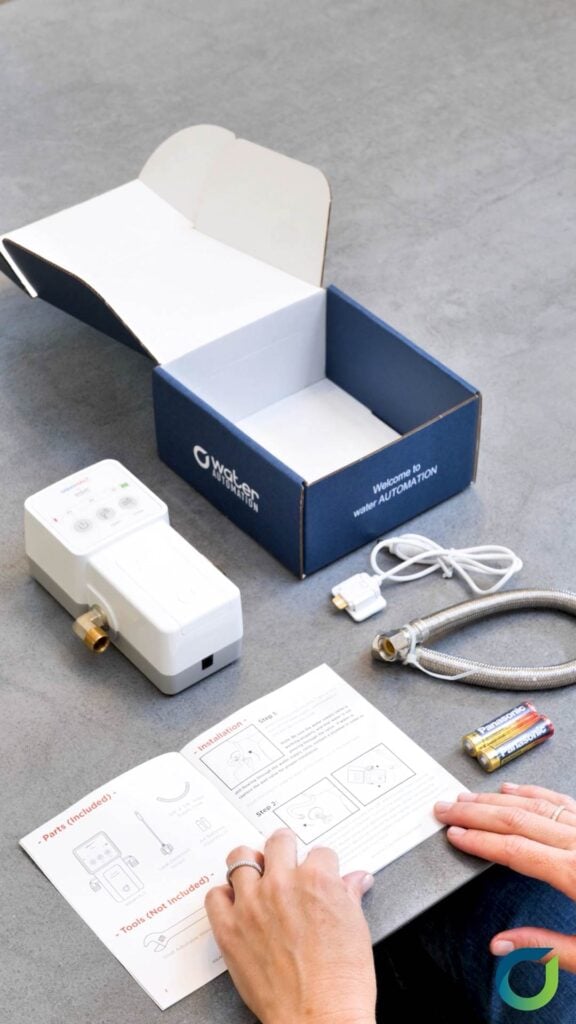
Remember when “smart home” devices were supposed to make life easier?
Now your toaster needs a Wi-Fi password, your light bulbs demand firmware updates, and your smart thermostat only listens if you speak fluent robot.
Leak detectors shouldn’t be like that – and with aquaHALT, they’re not.
At waterAUTOMATION, we believe home protection should be smart, but not complicated. You don’t need an app, a cloud account, or a three-hour YouTube tutorial. You just need something that works.
Somewhere between your fridge’s ice maker and your smart speaker that won’t stop listening, technology got a little… much.
aquaHALT brings sanity back.
This little $150 device does exactly what you want: detects water where it shouldn’t be and lets you know immediately.
No pairing, no syncing, no “device not found.”
Just you, two AA batteries, and pure peace of mind.
Setting up aquaHALT is so simple, it’s almost suspicious.
It’s like putting down a smoke detector for leaks – only quieter (until it’s not).
Leaks don’t check your connection before they strike. They don’t care if your router’s down or if your smart hub needs a reboot.
That’s why aquaHALT is proudly offline. It doesn’t need Wi-Fi, power, or your phone to function.
Even during a blackout, it stays alert, powered by its trusty AA batteries.
When it detects water, it sounds the alarm immediately – no buffering, no delay, no cloud dependency.
Think of your home like a map of potential mini-disasters. If water can flow there, it can also leak there.
Here are the best places to install your aquaHALT devices for all-around protection:
The most common source of leaks – out of sight, out of mind, and often out of hand.
Dishwashers, fridges with water lines, and washing machines love to leak just enough to ruin your floor slowly.
A ticking time bomb of pressure and heat. One burst valve and you’ve got an indoor hot spring.
If water’s getting in, you’ll want to know before it becomes a swimming pool.
Because tile grout and caulking age like milk, not wine.
By covering these areas, you turn your home into a leak-free fortress.
Once placed, aquaHALT just works. No maintenance reminders, no subscription renewals, no app notifications telling you it’s lonely.
It’s the kind of product you forget exists – until it saves you thousands.
And that’s the point. Real smart technology is the kind you never have to think about.
A lot of companies want to sell you “connected” everything – connected fridges, connected toothbrushes, probably connected socks next year.
But sometimes, the smartest solution is the simplest one. aquaHALT doesn’t compete for Wi-Fi bandwidth or demand voice commands. It just listens for water – 24/7, quietly and faithfully.
No apps. No wires. No nonsense.
Your home deserves protection that’s dependable, not demanding. aquaHALT brings leak detection back to basics – simple, effective, and completely foolproof.
Because the best tech isn’t the one that’s loudest, flashiest, or most complicated.
It’s the one that quietly protects your home while you go about your day.
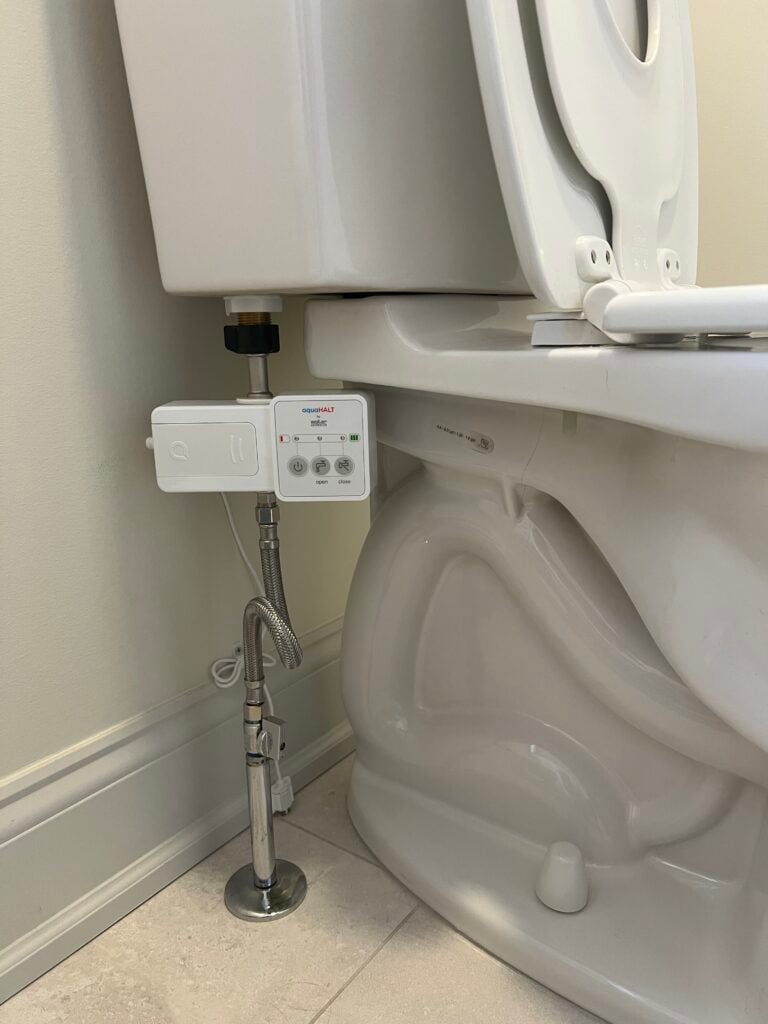
Let’s face it – owning or renting a property comes with enough stress already.
Mortgages, maintenance, insurance, bills… and now you’re supposed to worry about water leaks too?
Good news: you don’t need to spend thousands on a “smart home system” that talks more than it works.
You just need one simple, affordable device that quietly prevents one of the most common – and costly – home disasters.
That device is aquaHALT, from the team at water AUTOMATION.
It’s small, battery-powered, and laser-focused on one job: keeping your home dry.
Leaks aren’t polite. They don’t care if you own a penthouse or rent a tiny apartment – when water wants out, it’ll find a way.
And when it does, the damage adds up fast.
A burst washing machine hose can release hundreds of liters of water in an hour.
A dripping pipe can rot wood, destroy drywall, and feed mold like an all-you-can-eat buffet.
And fixing it? That’s a four-figure invoice waiting to happen.
You shouldn’t have to choose between protecting your home and protecting your bank account.
The $150 Solution That Does the Work of $10,000 Repairs
That’s where aquaHALT comes in – your affordable, no-nonsense answer to expensive problems.
For $150, you get a sleek, reliable leak detector that:
It’s the kind of purchase that quietly pays for itself the first time it prevents a soaked floor or mold cleanup.
aquaHALT isn’t just for homeowners. It’s for anyone who wants to avoid water damage – landlords, tenants, property managers, even Airbnb hosts.
If you manage multiple units, a few devices can protect every bathroom and kitchen under your care.
If you rent, you can place it under your sink or washing machine for peace of mind (and fewer awkward calls to your landlord).
No fancy systems. No contracts. No tech wizardry required. Just smart, affordable prevention.
When it comes to home protection, simple wins every time.
aquaHALT isn’t trying to be the next flashy “smart home” gadget – it’s designed to be invisible until it’s needed.
Set it. Forget it.
Let it listen quietly for leaks while you go about your day.
No updates. No subscriptions. No nonsense.
It’s easy to underestimate a small device – until it saves your kitchen, laundry room, or basement.
And while most homeowners assume water damage will never happen to them, the statistics tell another story:
For $150, you could join the minority – the people who don’t have to call their insurance company.
The real value of aquaHALT isn’t just in preventing damage – it’s in knowing your home is being protected 24/7.
Whether you’re at work, on holiday, or just sleeping soundly, it’s always on guard.
Because the best home security doesn’t just keep out intruders – it keeps out disaster.
At waterAUTOMATION, we built aquaHALT for people who value simplicity, reliability, and common sense.
Not everyone needs a smart hub. Not everyone wants another device to configure.
But everyone deserves a dry home.
aquaHALT proves that real innovation isn’t about bells and whistles – it’s about solving real problems affordably.
In the end, protecting your property doesn’t have to be fancy – it just has to work.
For $150, you can prevent thousands in damage, protect your belongings, and keep your stress levels low.
Two AA batteries.
Zero hassle.
One dry, happy home.
That’s aquaHALT – small device, massive peace of mind.